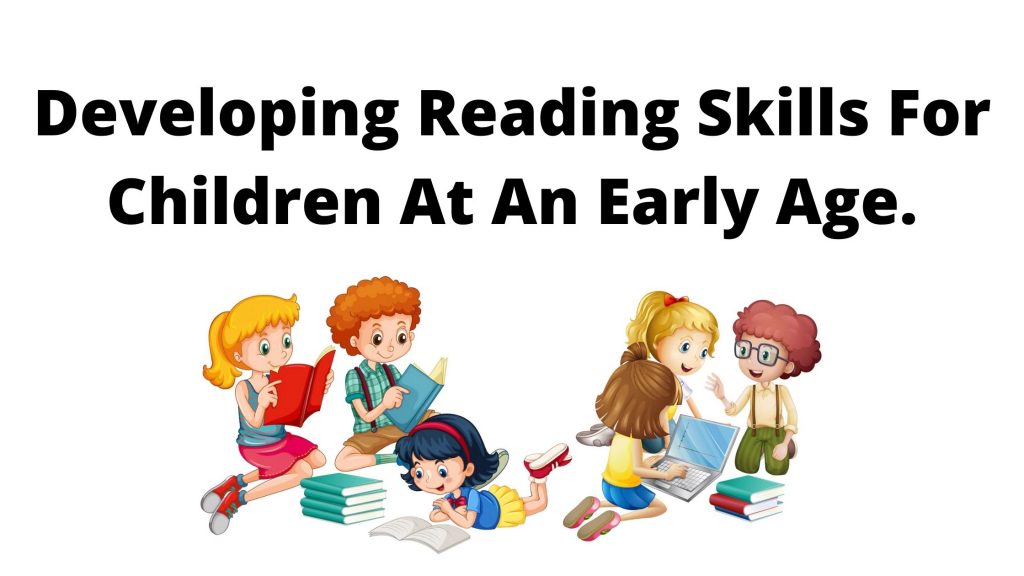
“Today a reader, tomorrow a leader” – Margaret Fuller (an American journalist and critic).
Between the ages of four and nine, your child will have to master some 100 phonics rules, learn to recognize 3,000 words with just a glance, and develop a comfortable reading speed approaching 100 words a minute. He must learn to combine words on the page with a half-dozen squiggles called punctuation into something – a voice or image in his mind that gives back meaning. (Paul Kropp, 1996)
Reading opens doors to the universe, and beyond; the younger a reader is, the more door it opens. As children learn to read, their vocabulary expands and they gain a greater understanding of the meaning of words. This enables a child to be more expressive when they speak, and to use a broad range of words to share what they’re thinking about.
Children can also learn how to communicate with others through the dialogue they read in their books. The wonderful thing about stories is they provide children with tools to use in their own lives, whether this is learning how to communicate with their friends or with other people they meet. Books can also teach etiquette, politeness, and friendliness in conversation. Children’s books may be predominately picture-based and contain only a small amount of words, however, the information they contain is invaluable to a child’s development. These books can teach young children important lessons about family, friendship, growing up, and much more. They often share information about nature, animals, other cultures, and the world. Without realising it, a young reader is broadening their knowledge by reading about the fictional characters within their stories. They don’t need to read 1,000-page novels to learn something significant; a life lesson can be learnt from any book, regardless of the word count.
Young children continue to develop listening and speaking skills as they communicate their needs and desires through sounds and gestures, babble to themselves and others, say their first words, and rapidly add new words to their spoken vocabularies. Most children who have been surrounded by language from birth are fluent speakers by age three, regardless of intelligence, and without conscious effort.
Each of the 6,000 languages in the world uses a different assortment of phonemes – the distinctive sounds used to form words. When adults hear another language, they may not notice the differences in phonemes not used in their own language. Babies are born with the ability to distinguish these differences. Their babbles include many more sounds than those used in their home language. At about 6 to 10 months, babies begin to ignore the phonemes not used in their home language. They babble only the sounds made by the people who talk with them most often.
At the same time as they are gaining listening and speaking skills, young children are learning about reading and writing.At home and in child care, Head Start, or school, they listen to favorite stories and retell them on their own, play with alphabet blocks, point out the logo on a sign for a favorite restaurant, draw pictures, scribble and write letters and words, and watch as adults read and write for pleasure and to get jobs done.Young children make numerous language discoveries as they play, explore, and interact with others. Language skills are primary avenues for cognitive development because they allow children to talk about their experiences and discoveries. Children learn the words used to describe concepts such as up and down, and words that let them talk about past and future events.Many play experiences support children’s emerging literacy skills. Sorting, matching, classifying, and sequencing materials such as beads, a box of buttons, or a set of colored cubes, contribute to children’s emerging literacy skills. Rolling playdough and doing fingerplays help children strengthen and improve the coordination of the small muscles in their hands and fingers. They use these muscles to control writing tools such as crayons, markers, and brushes.As their language skills grow, young children tell stories, identify printed words such as their names, write their names on paintings and creations, and incorporate writing in their make-believe play. After listening to a story, they talk about the people, feelings, places, things, and events in the book and compare them to their own experiences.
Reading and writing skills develop together. Children learn about writing by seeing how the print in their homes, classrooms, and communities provides information. They watch and learn as adults write – to make a list, correspond with a friend, or do a crossword puzzle. They also learn from doing their own writing.
